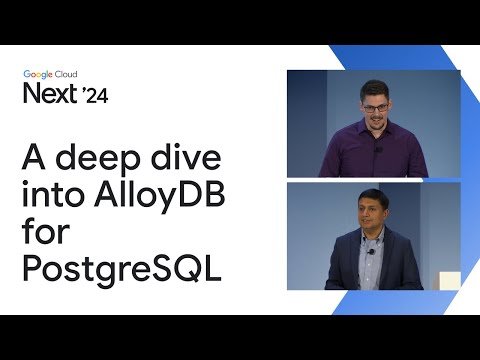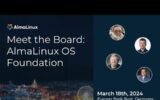In this video, the speakers delve into AlloyDB, Google’s fully PostgreSQL-compatible database designed for high-performance workloads and cloud modernization of legacy databases. AlloyDB stands out with its Google-embedded storage, providing exceptional performance, scale-out architecture, 99.99% availability SLA, intelligent caching, and ML-enabled adaptive systems.
The session begins with Sandy Ghai, Product Manager for AlloyDB, who introduces Ravi Murthy, Senior Director of Engineering at Google Cloud, and Aaron Joyce, Geospatial Engineering Lead at Bayer. Sandy outlines the session’s agenda: an introduction to AlloyDB, a deep dive into its technology, and a case study from Bayer.
Sandy emphasizes AlloyDB’s origin, driven by customer demand to migrate from legacy databases like Oracle and SQL Server to open-source databases like PostgreSQL. AlloyDB addresses needs for enterprise capabilities, performance, and scale. With PostgreSQL’s growing popularity, AlloyDB serves heterogeneous migrations and a wide user base.
Ravi Murthy explores AlloyDB’s architecture, highlighting its disaggregated compute and storage layers. This architecture ensures independent scaling, predictable performance, and cost efficiency. He explains how AlloyDB optimizes write and read paths, eliminating IO bottlenecks and providing high throughput and low latency.
Aaron Joyce shares Bayer’s experience with AlloyDB, detailing their challenges with replication lag and increased traffic. AlloyDB’s performance, ease of migration, and replication lag improvements proved crucial for Bayer’s operations.
Sandy concludes with AlloyDB’s innovations, including AlloyDB AI for building generative AI apps, vector embeddings, model support, and vector search. She highlights AlloyDB’s seamless integration with PostgreSQL and Google’s advanced algorithms, offering superior performance and flexibility.
The session showcases AlloyDB as a powerful, scalable, and fully-managed PostgreSQL-compatible database, transforming database management for modern applications. The speakers encourage exploring AlloyDB’s capabilities through additional sessions and resources.


